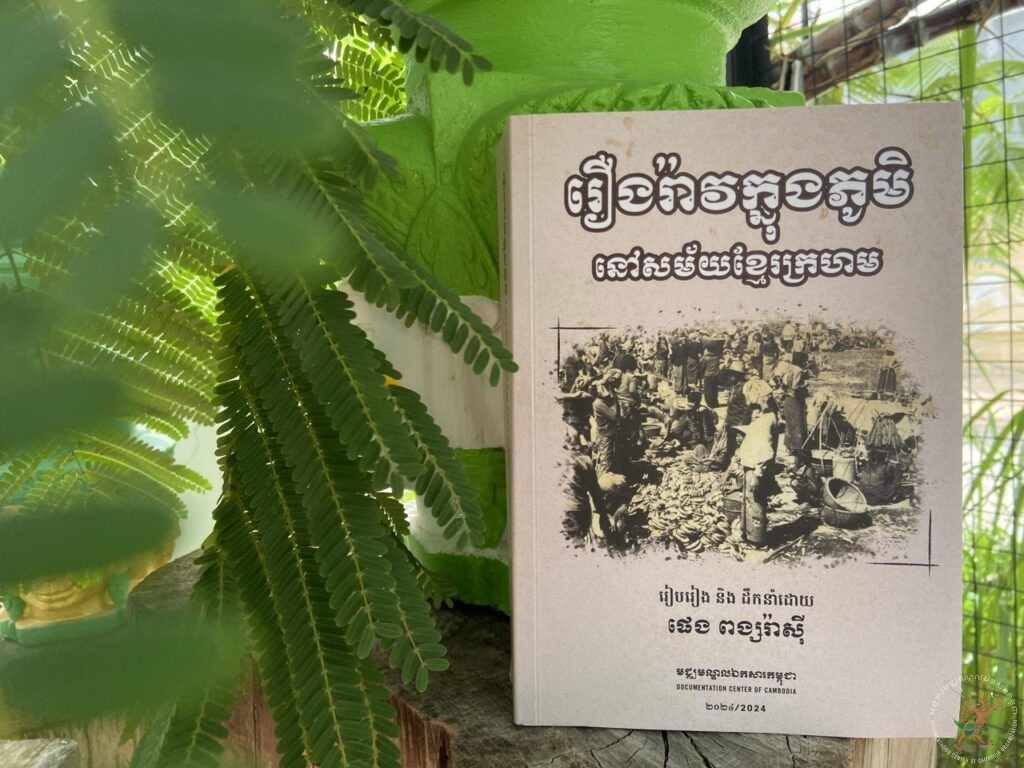Book Release: “Village Stories of the Khmer Rouge Years”

PHNOM PENH — Hong Vansothy remembers sitting in front of the television set with her mother and grandmother. This was in the 2010s and they were watching a broadcast of the trial of the Khmer Rouge leaders, which was taking place in Phnom Penh.
“What happened,” Vansothy asked. Upon hearing her question, her grandmother broke into tears. And for the first time, her mother told her of their family’s life during the Khmer Rouge regime of 1975 to 1979. “How about grandfather,” Vansothy asked. “He was killed,” her grandmother replied, during the regime because he was an educated man.
Vansothy, who is a teacher in Siem Reap city, is one of more than 60 people who contributed personal stories and even poems to the book “Village Stories during the Khmer Rouge Years.”
Published by the Documentation Center of Cambodia (DC-Cam) in September 2024, the book features stories and even poems contributed by people from all walks of life who either lived through the regime or told the story of their parents or grandparents. There is a tailor, a soldier, a police officer, a business person, a writer, a journalist as well as other professionals and workers from various fields. Some of them had not, until now, been able to speak about those years—a time during which the Khmer Rouge regime caused the death of more than 2 million people in less than 4 years.
The stories were compiled since 2020 by Pheng Pong Rasy, director of genocide education program at DC-Cam, as well as by others DC-Cam staff members.
In the story entitled “One Day, One Night,” Mao Sovandy, who is now a retired officer living in Stung Sen city in Kampong Thom province, speaks of Reth whose father was killed as being an enemy of the Khmer Rouge’s Angkar—as the regime’s governing body was referred to—and who himself started to be treated as an enemy.
In the story entitled “The Black Cloud,” Ben Ekri, a teacher in Kampong Thom province, talks of his family being forced to transfer from a city in Kampong Thom province to a village in 1975. Ordered to work as part of what the Khmer Rouge called cooperatives, he saw one person after the other being killed.
The book, which is written in Khmer, was published as part of DC-Cam’s efforts not only to help document this chapter of Cambodia’s history for the country’s archives, but also to help people who lived through it tell their story for themselves as well as for their children and grandchildren—a way to also help heal the country as these scars get transmitted from generation to generation as researchers and experts have demonstrated in several countries that have experienced such tragedies.
The book “Village Stories during the Khmer Rouge Years” can be consulted in Phnom Penh at the Queen Mother’s Library or at the office of DC-Cam located at Mansion 11, Street 256 in Phnom Penh.
Text by Lyhour Sreang
September 2, 2024
For information:
Facebook: www.facebook.com/TheQueenMotherLibrary
Website: https://www.dccam.org/
Email: dccam@online.com.kh

